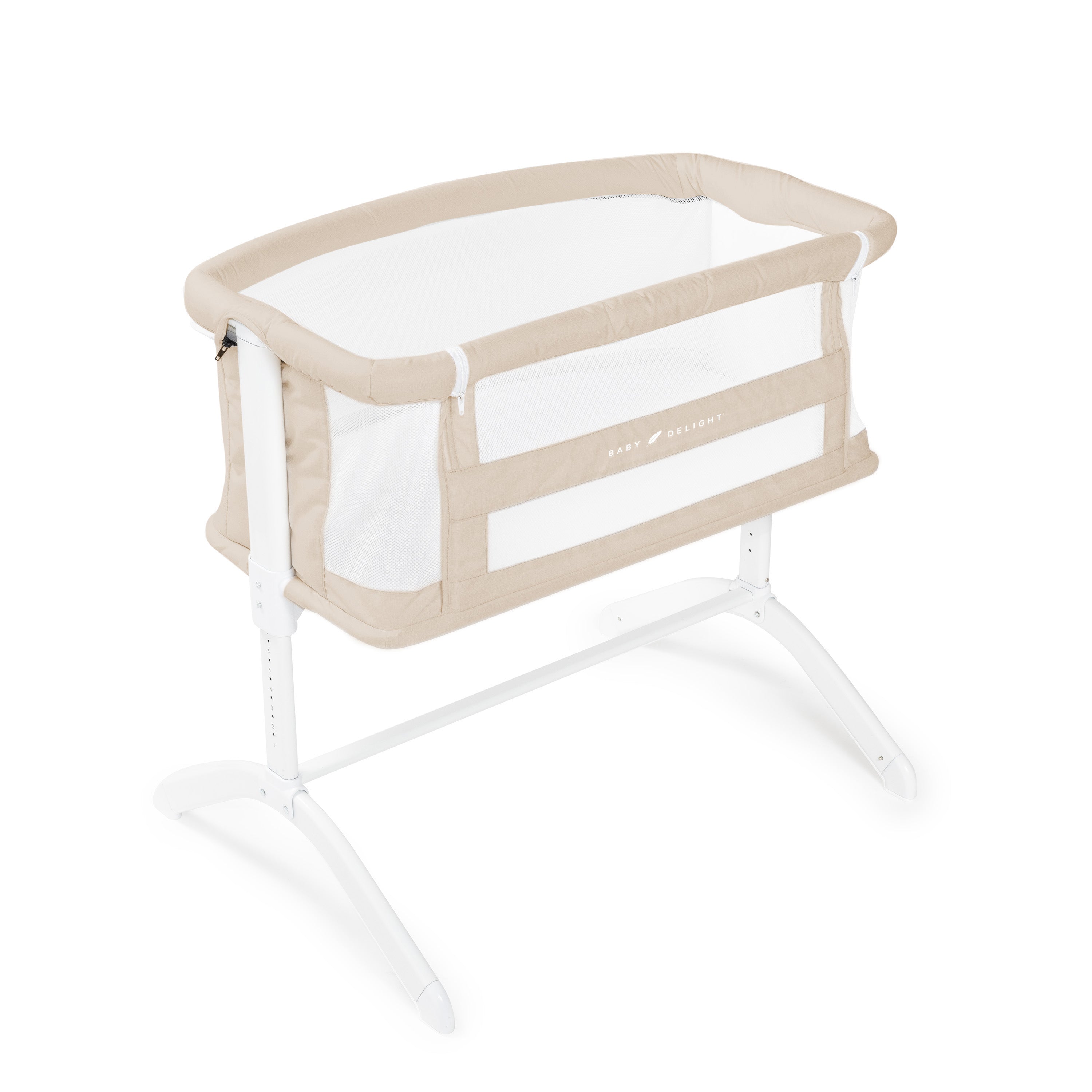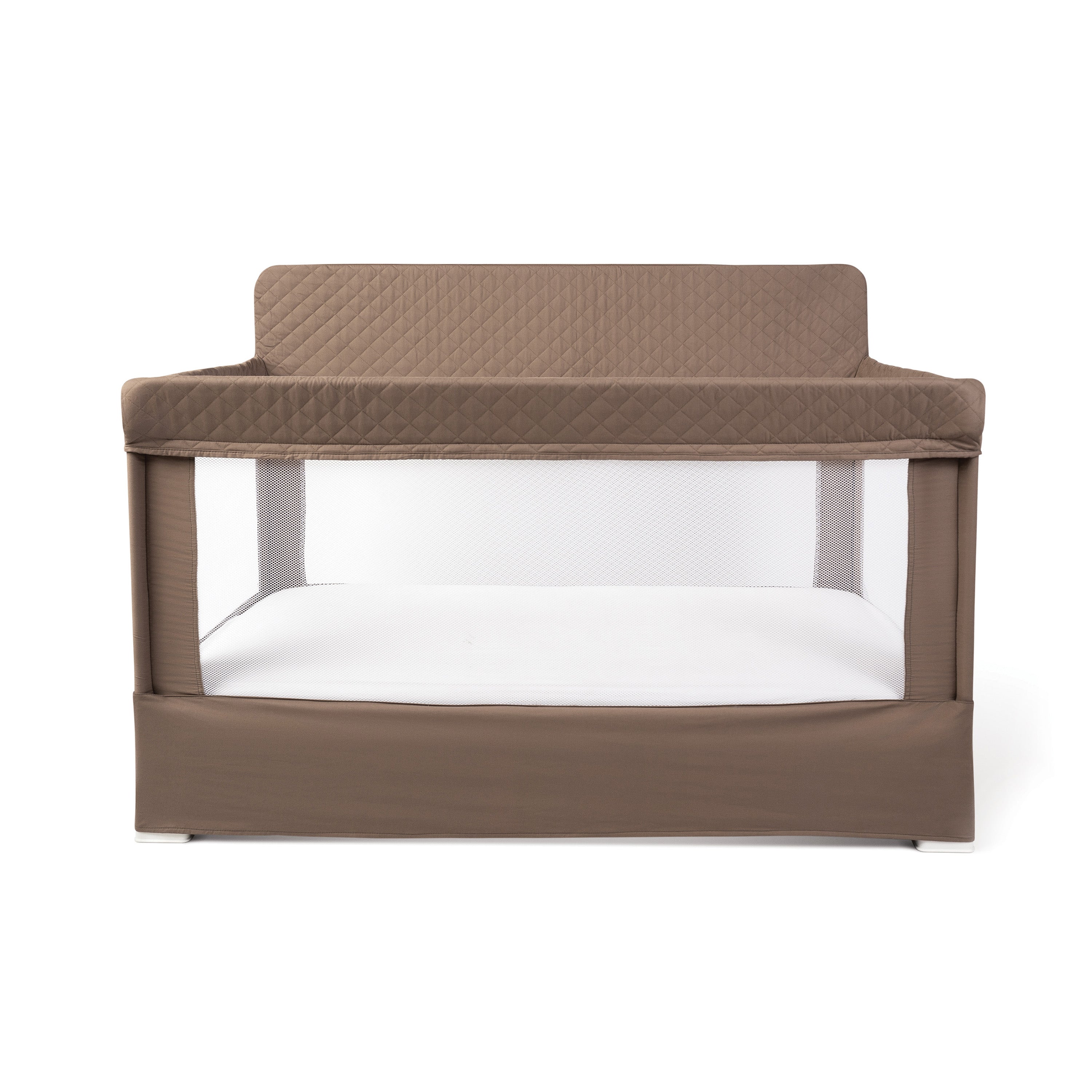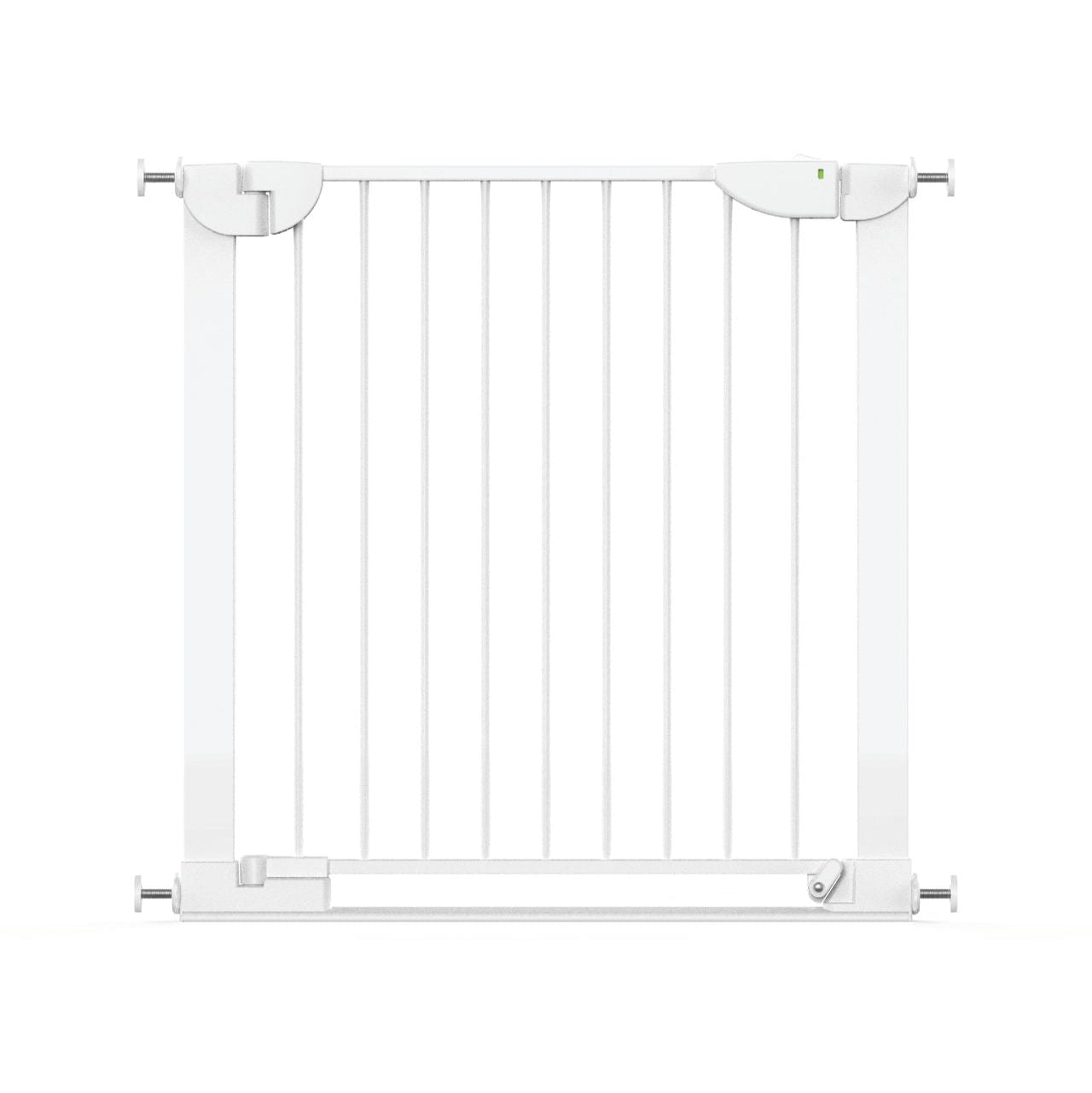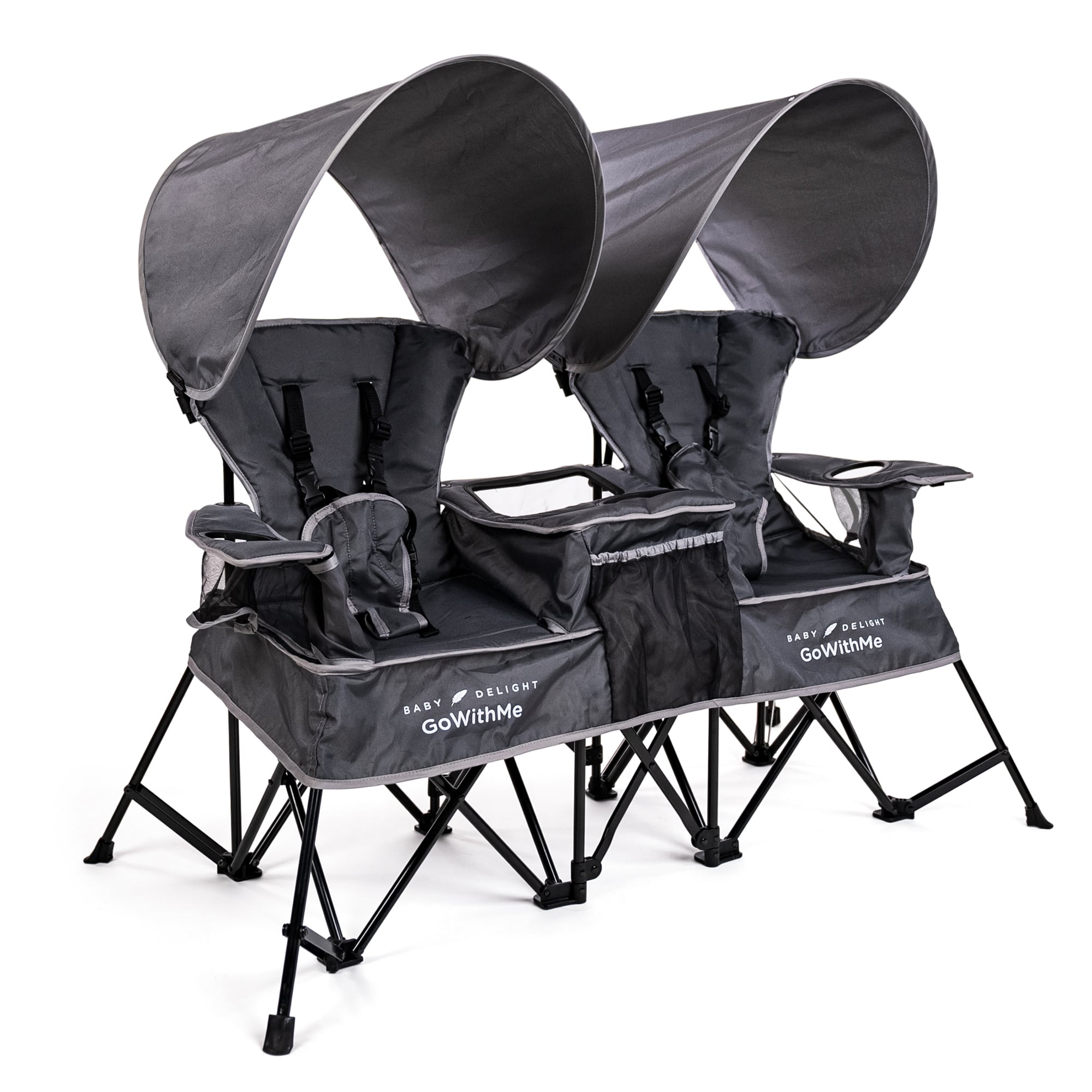
A Guide to Gentle Sleep Training
So you’re thinking about sleep training. Good, who doesn’t love sleep?! We all need it. You’re not being selfish for wanting your baby to sleep better so that you can get more sleep. Sleep is so important for our babies to grow and so parents can get rest to provide optimal care to their babies. Often times babies need our assistance to sleep, whether it’s soothing, feeding, co-sleeping etc. As a parent you get to choose what works for you and your baby. Sleep training is not for everyone, but it's what worked for my husband and me. As a working mom, I wanted my babies to be able to sleep on their own. My goal was to minimize wake times, allowing daddy to sleep while I was at work overnight. And on my nights off, I could sleep too! Selfish of me? Not entirely. Our babies need sleep for their development, it’s sooo important that their little brains get the proper rest. So by learning to self soothe, they can sleep longer.
Nursing to sleep? What a beautiful thing! Again, as I am a night shift nurse, my babies can’t rely on my husband to breastfeed them back to sleep. It’s just not possible.
That’s where sleep training came in for us. If you’re looking for tips and tricks to help your baby sleep on their own, you’ve come to the right place. Be sure your baby has gained enough weight and does not need to be fed multiple times during the night before sleep training. Here we go!
My Guideline to Soft Sleep Training
- Establish a Bedtime Routine
- Set the Environment
- Swaddle
- Drowsy but awake
- Establish a Bedtime Routine
This can be started at any age. I recommend the earlier the better, so your baby will learn it’s time for bed. So soak up all the newborn snuggles, but consider starting a bedtime routine around 6-8 weeks old. A simple routine can be a quick wash up, feeding, sing a song or read a book, then off to bed. You decide what works for you. Your baby will pick up the consistency of these bedtime actions and it helps guide them into a sleepy zone. Our first baby needed a very quick routine, whereas our second baby could listen to 100 songs before getting agitated. We literally could lay him down smiling at us and walk away!
- Set the Environment
A quiet, dark, comfortable room is optimal. This is the best way to start sleep training, and when they are a pro at sleeping you’ll be able to put your baby down almost anywhere. But for starters, most babies have a really difficult time adjusting to life outside the uterus. So we have to recreate that same atmosphere they were just so familiar with for the past 9 months. Maybe you’ve heard of the 4th trimester? It’s a real thing! You can read more about it in The Happiest Baby on the Block. I learned a few great tips from that book with my first baby. Part of this 4th trimester environment is sound. Using white noise or a similar sound (like a vacuum or hair dryer) via sound machine is sooo effective. We use the Dohm for at home, something I use myself to drown out day time noises during my naps after night shift, and the Hussh for traveling or on the go. You can find both on Amazon.
If you have to change them and feed them during the night, KEEP THE LIGHTS LOW! Do not turn on all the lights so you can see well. Your baby will think its day time and be more alert. And don’t get your baby all excited by talking and singing to them, it's just best to be as quiet as you can too, unless you need to tell your partner to stop talking to the baby!
And of course be sure the temperature of the room is not too hot or too cold. Soon you’ll learn what temperature your baby sleeps best in and what kind of layers they like. As newborns I never used sleeper pajamas on my babies because I was changing them so often. But after a couple months you’ll see their bowel regimen changes for the better.
- Swaddle
Part of that 4th trimester is the feeling of security and comfort. Swaddling your baby does just that and more. It minimizes waking up from startle reflex, keeps them cozy warm, and prevents them from rolling and waking. Even if your baby resists the swaddle at first, give it a couple minutes, because they may just be blowing off some steam. For our babies, we started with a tighter swaddle, then transition to a looser sleep sack as they grew bigger. You’ll find a variety of swaddles and sleep sacks, be sure to use something with secure buttons or zippers. Never use big loose blankets that can be harmful for baby to sleep with. After weaning the tightness of a swaddle, the next step is to wean the arms out of that secure feeling. So you can wean out of a full arm swaddle by leaving one arm out over several nights allowing baby to acclimate. And lastly, as your baby grows and the startle reflex starts to disappear, you can transition to a sleep sack. As I mentioned before, I’m a big advocate for safe sleep plus my fear for SIDS, we don’t use blankets in our babies’ cribs. The sleep sack acts as a blanket and I can sleep worry free. Our son is 7 months old and weaning out of a sleep sack for naps but still using it at night.
- Drowsy but awake
I’m sure you’ve heard this before if you’re currently reading a blog about sleep training. Lots of sleep training guides mention putting baby down in the crib while he or she is drowsy but awake. This is really important to help your baby learn how to “self soothe” and fall asleep on their own. So how do you get there? Follow the steps above. Flow through your bedtime routine that you’ve now established for several days or weeks. Take your baby to the beautiful sleep environment. Your baby is swaddled and oh so comfortable now! The perfect way to fall asleep…. Right? Should be! Whichever method you use to put your baby to sleep, whether it be rocking or nursing etc, you will want to stop before they fall asleep on you. With our son I weaned him over several nights from rocking, to swaying while standing up, then just standing still for a few minutes before placing him down in his crib. Now I can carry him down to this room and put him right down, at 6 months old. As you feel them become totally relaxed, as they start to doze, you have to take that moment and place them into their bassinet or crib. I call it the sweet spot, when baby is completely relaxed you can literally feel their breathing slow and their muscles ease. When you have them in their sweet spot you lower them into the bassinet or crib in a slow rolling method as oppose to straight down.
How to wean from bad sleep habits
Whether it is rocking, nursing, swinging etc, you can always wean your baby off those sleep crutches and create better sleep habits. Start by lessening those actions by one minute a night. So if you normally rock your baby to sleep for 15 minutes, well tomorrow you'll rock for maybe 13-14 minutes, and the next night 12 minutes. When you’ve decreased the time then rock much slower, and lastly you should be able to sit down in that rocking chair and just sit still for a couple minutes. Same goes for nursing in the middle of the night. I literally just accomplished this with my son and it worked so well. When I knew he really didn't need the volume of nursing overnight, I started cutting back on the time he spent at breast and would pull him off sooner and sooner over several nights. When I was working overnight, my husband gave him smaller amounts of breastmilk (3 oz instead of 4, then 2.5oz and so on). So you can use this same method with bottles of formula as well. There was no crying involved, jackpot!
Placing baby down to sleep
Seems silly to mention but I’m sure you’ve placed your baby down and then as soon as you do they fling their arms and legs out, and cry out, right? Now they’re awake again! To prevent the Moro Reflex, or startle reflex, when you lay them down, you’ll want to try gently rolling them from your body so they touch the crib/bassinet on their side first then turned onto their back. This will help eliminate that feeling of falling, therefor baby won’t startle.
What if baby wakes up?
If baby wakes during the night, and you know your baby does not need to be fed or changed, then I recommend quick and simple comfort. Also, consider sizing up in their diaper so you don’t need to change them in the middle of the night. Simple comfort can include “shushing”, patting or rubbing their back, placing your hand on them, or giving a security item like pacifier. You get to choose what method you want to use and your baby will find comfort in this, soon obtaining the ability to self soothe.
With our daughter, if I picked her up then it was all over. She was not going back to bed! So we used a simple method of patting or rubbing her back, giving her pacifier back to her and walking out of the room within 30 seconds. Any longer and she was sure you’d be sticking around to save her. We did use the Ferber Method with night wakings. But after 5 nights of sleep training, she could literally sleep anywhere. She is the best sleeper and we can travel without worry. With my son, he didn’t care for the pacifier so we would simply place our hand on his chest and “Shush” him back to drowsiness. Then he started sleeping on his belly, so we would rub his back a little bit then step away. He also found comfort in a "lovey", his tiny blanket with an elephant on it. I can place this by his head or hand and he grabs onto it. He too is a great sleeper.
The Keys to Successful Sleep Training
Be Persistent – this can take a little while, don’t give up after one or two nights.
Be Consistent – be sure you and your partner are on the same page, you don't want to undo one another's progress.
Timing – You won’t want to try this when baby is a couple weeks old. But you should try before they turn 6 months old. When you start, the slower you take it, the less crying for baby.
Never during change – whether its teething, illness, moving etc… avoid sleep training, it won’t work and it’s not fair to baby.
A well-rested baby is a happy baby! Just remember, every baby is different, what works for your first baby may not work for your next.
Best of luck to you on your journey to better sleep!
>>The New England Momma










































Leave a comment
This site is protected by hCaptcha and the hCaptcha Privacy Policy and Terms of Service apply.